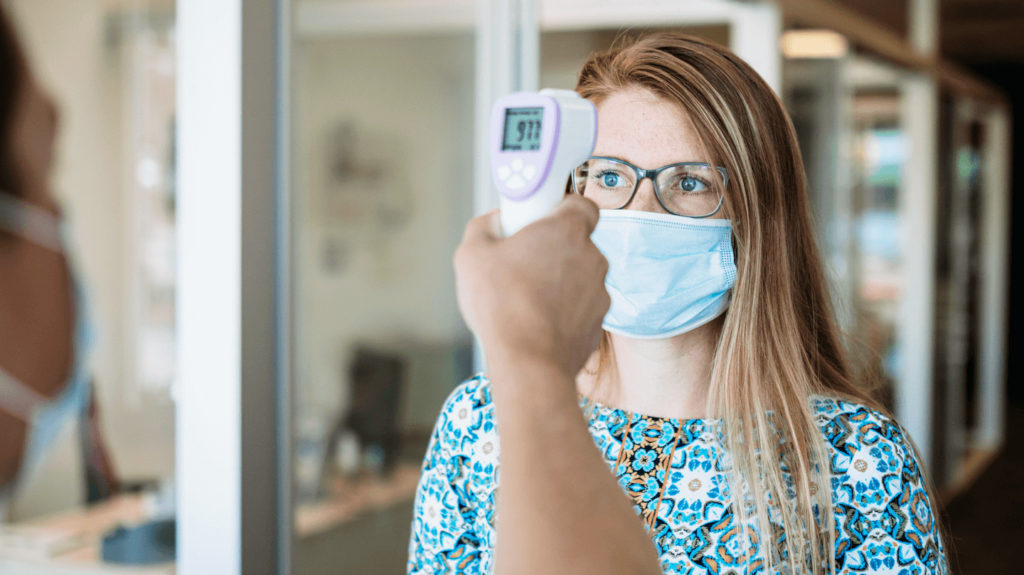
The pandemic not only sped up the adoption of technology in the senior living and care field; it also opened the door to a variety of new technologies that one expert said are here to stay.
Technologic innovations have helped long-term care organizations tackle everything from resident safety and mobility to filling gaps left by staff shortages.
Infection control, as well as staff and resident screenings, introduced during the COVID-19 pandemic remain important technology components across settings, according to the 2022 edition of the LeadingAge Ziegler 200.
Infection control technology is here to stay
The publication, which includes trends in the adoption of various aging-related technologies across 1,570 market-rate communities, showed that 49% of communities — compared with 51% last year — continue to use infection control technologies.
Screening technology use also ticked down 2% from last year, but Majd Alwan, PhD, former executive director of the LeadingAge Center for Aging Services Technologies, told McKnight’s Senior Living that the finding shows that this category is maintaining its importance thanks to COVID-19.
Although he said there may be a gradual drop over time in some subcategories of technology solutions, “in general, there is going to be more and more infection control surveillance on the software aspect,” especially in skilled nursing or rehabilitation facilities.
Because federal infection control requirements don’t exist for assisted living settings, Alwan said that use in assisted living will vary depending on state-level regulations and scrutiny.
“If you look at the fact that the older adult population serviced by senior living was one of the hardest hit and impacted and affected by this virus, I believe we will see a little more emphasis on some kinds of measures to present the spread of infectious disease and viruses moving forward in those settings,” Alwan said.
Resident monitoring gained importance during pandemic
The continuing importance and use of telehealth and remote patient monitoring by senior living and care organizations also grew due to the pandemic, according to the results. Alwan said that the telehealth category experienced a 24% jump back in 2020 to provide residents with timely and much-needed access to healthcare services.
“Remote patient monitoring is helping people manage their chronic conditions in the care setting they are in while minimizing their exposure to infectious disease, and helping them with preventing chronic conditions from exacerbating,” he said.
Another technology growing in importance in the sector includes telemonitoring/behavioral monitoring of activities of daily living, which has remained steady at 17% for the past five years. Alwan said there was a slight 2% increase in use in assisted living, independent living and memory care due the value of the technology in determining appropriate levels of care for residents or clients.
He also noted that there is no category of organizations found in the survey that does not use a health information exchange, whether directly through an emergency health record or indirectly through a health information exchange entity or network. The number of organizations that do not use health information exchange capabilities shrunk from 42% to 31%, he added.
On average, 65% of the senior living and care communities represented in the report, including skilled nursing facilities, have adopted electronic point of care/point of service documentation systems and electronic health/medical records.
“We’re living in an age, especially after coming out of COVID, where we’re finding that we are more and more dependent on sharing information, getting information from others and getting information to others, especially around shared care, transitions of care,” Alwan said, adding that those systems are most helpful for reporting information about vaccination status and infection surveillance and control reporting to public health authorities.
Other trends highlight technology use in senior living
Data analytics is another category introduced to the survey four years ago that is showing persistence in the industry. Alwan said that many providers are starting to recognize the value of having data, and deriving insights based on the data available.
“They’re using different types of data analytics, especially more advanced data analytics tools — not just visualizations, but predictions of where the population is going, in terms of functional abilities and cognitive status,” Alwan said.
The report also included data on the use of robotics, social connectedness, safety monitoring, and health and wellness technologies.




